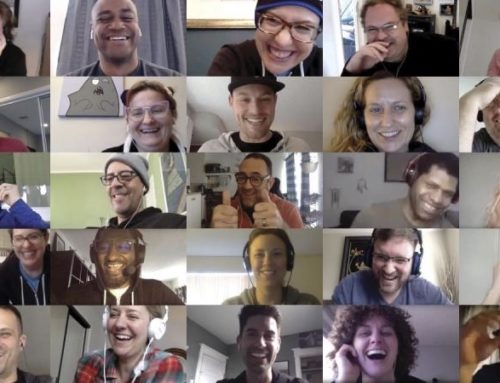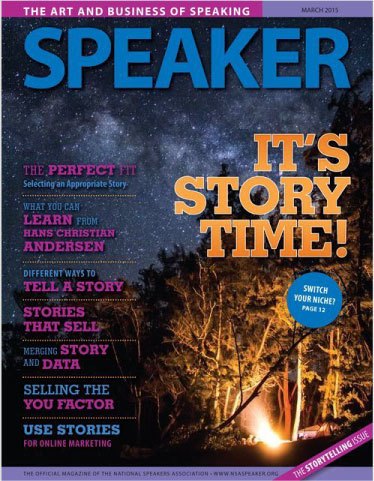Thanksgiving morning I found myself dressed as a clown marching down the streets of downtown Detroit with my husband and two cousins in America’s Thanksgiving Day Parade. I had a wonderful time tossing Mardi Gras beads to little children and grandparents alike.
Later that night we shared a delicious meal with 30 other members of the extended family. On the surface it was a joyous affair, except that my cousins are grieving the loss of their mother, who died in September. This is the first holiday without her. Chanukah will be the second. New Year’s Eve will be the third.
Sadness Instead Of Joy
Every year Thanksgiving weekend kicks off a volley of advertisements, sparkly lights and Christmas carols wishing us a “…merry Christmas and a happy new year.” But for many people the pressure to be joyful during the holiday season sparks feelings of depression, sadness, and anxiety.
Especially for those, like my cousins, who are dealing with personal loss.
Layoffs and The Holidays
Or, as in the case with employees at organizations like: GM, Ford, Deutsche Bank, Equifax, Novartis, Pfizer, Bayer, Novo Nordisk, GlaxoSmithKline, Ikea, Sears, Macy’s, Walmart, J.C. Penny, Verizon Wireless, AT&T, Thomson Reuters, Conde Nast, Refinery29, Pepsi, Kimberly Clark—and perhaps your company—are dealing with massive restructuring and the loss of beloved colleagues due to layoffs.
What often happens after a large-scale reorganization is that management is too quick to signal that it’s time to move on. Suck it up. Get back to work. No one wants to acknowledge that people are grieving the loss of the way things were.
The time between Thanksgiving and New Year’s Eve amplifies this misstep. By avoiding talking about the emotional toll restructuring takes on employees, C-Suite executives undermine the very strategy they are trying to put into place.
What’s a Leader To Do?
If you are working in a company that has experienced a large-scale transformation project—or are dealing with staff that have endured personal losses this year, like the death of a child, spouse, sibling or parent, a divorce, a cancer diagnosis or severe health issue, here are some ideas to help you lead during the holidays.
Turn on Your EQ. Watch for Signs of Stress
The first thing is to pay close attention to how people are behaving.
Any kind of change, or loss, creates stress. Stress affects our brain function as well as our immune systems. Perceptive leaders understand this. They are not surprised when absenteeism due to illness, or depression, shoots up the weeks before Christmas.
They are actively on the look out for people who are struggling to concentrate, who suddenly miss deadlines, and who are more sarcastic or snippy than usual.
The three areas where you might start to see behavior changes are: mental, physical and emotional. Keep an eye out for the signs of stress.
Signs of Stress
Mental:
Physical:
Emotional:
If you notice someone on your team exhibiting some of the above symptoms, check in and see how they are doing.
Simply say that you care about their well-being and have noticed some changes. Give examples of the changes you’ve observed, and then gently ask if they’d like to talk about it.
Just showing you care is often enough to smooth someone else’s journey through the holidays.
It’s possible that during the conversation an employee might admit to needing more support than you are trained to provide. When that is the case, you’ll want to be prepared by knowing what resources exist.
Get to Know Your EAP
As a boss one thing you can do to help ease someone’s suffering is to get to know how your company’s Employee Assistant Plan works.
Take some time this week to read up on how to access services. Put the phone number and website in your contact list so that you can easily find it when you need it for someone.
According to a report by Chestnut Global Partners, a provider of Employee Assistant Programs, 40% of people that use these types of programs are suffering from depression, anxiety, or stress. EAPs can be a lifesaver at this time of year.
If your company doesn’t have an EAP, do some legwork before you approach your employee and find a few online resources you can share with them if needed.
The Anxiety and Depression Association of America (ADAA) has a ‘find help’ section on their website, as does The National Institute of Mental Health.
The Substance Abuse and Mental Health Services Administration (SAMHSA) has a confidential and anonymous treatment services locator to find services in your area.
Managing Mental Stress and The Gift of Time
Several of the symptoms of mental stress are reduced attention span and difficulty concentrating. A simple solution to this is to give the gift of time.
50 is the New 60
One of my clients recently told me that in her department: “50 is the new 60 and 20 is the new 30.”
She has strategically shortened the length of her weekly status update meetings by 10 minutes. All calendar invites now go out for 10 minutes after the hour. Eg: 2:10 – 3:00 pm.
This gives everyone on her team a few extra moments at the end of their conversation to organize notes, send a quick email or go to the washroom before their next call without feeling rushed.
Everyone loves it. (Including her!)
Review the Invite List. Who doesn’t need to be there?
I have another client who checks the list of invitees the day before each meeting.
If he sees someone scheduled to attend he suspects won’t add, or receive value from being there, he’ll let them know they are welcome to come if they want, but they are not required to make an appearance just for optic’s sake.
He’s reported that most people are grateful for the extra time in their day.
Even better, he says: “the meetings themselves are more productive because the right people are in the room focusing on things that are important to them.”
Cancel the Meeting: On Purpose
A third client I know will randomly schedule a 90-minute team meeting with the express purpose of cancelling it.
He told me: “The best thing I can give people is an unexpected chunk of time that they can do anything they like with. I’ll bring them all together and then ask: what could you do with an extra hour today? And it doesn’t have to be work related.” Then he instructs them all to go off and do that thing.
A word of caution with this one: it only works when it’s a surprise. Don’t do it so often that your team figures out what you’re up to.
What are your Employees UPTO?
Speaking of “up to”, if your company has an unlimited paid time-off (UPTO) policy, you may want to review who has actually taken their time off.
Kickstarter found that after they implemented unlimited time off, the average employee took less vacation time than before the program went into place.
On the surface this may look like a good thing. You’d figure with more time at work, productivity would increase. But in reality it affected employee engagement, morale, and general employee health negatively.
If you’ve an employee that is exhibiting mental, physical or emotional signs of stress, and you have a flexible time off policy, suggest that the individual take advantage of it. Let them know they are more valuable to you when they are rested, recharged and focused.
Companies like GE, Netflix, Glassdoor and Kronos found that employees felt less guilty about taking the time they needed when a manager gave them permission that it was okay.
Holiday Cards: Old school
A simple and meaningful way to let your staff know you value and appreciate them is to give each person a handwritten holiday card.
Cite one or two examples of things they did this year that impressed you. Let them know you are looking forward to a continued partnership in 2019.
I still have a Christmas card I received from a Toronto Casting Director back in 1999. He’d taken the time to write a few personalized sentences complimenting my drive and resilience. That one card helped me cope with the hundreds of rejections I got as actress in the years that followed.
A few kind words in ink, on paper, can ease a world of hurt.
Keep Healthy Snacks on Hand
One of the symptoms of physical stress is stomach upset. An easy way to support your team is to proactively have a healthy assortment of snacks on hand.
Replace the candy bowl that lives in the company kitchen, or on your desk, with apples, oranges and bananas. Instead of opening a bag of chips, bring in some carrot and celery sticks.
You might also want to have a roll of Tums or Rolaids on you at all times. Be the go to person for even the smallest things your staff needs.
The Healthy Holiday Party
Continue the theme of healthy eating into the holiday party.
If your company typically does a potluck meal together, create a sign up list with categories of the types of foods that will make a well-balanced meal.
I recently attended a Wednesday afternoon potluck Thanksgiving lunch at a client’s office. Of the 20 people who brought items there were 9 cheese and cracker trays, 6 versions of brownies, cookies or tarts, 3 bowls of chips with various dips, and only one salad.
The salad was gone in the first 5 minutes and most of the tarts ended up in the trash.
A Quiet Party Room
One of my clients is very attuned to the needs of his more introverted employees.
He makes sure that the company party has one room set up for loud music and dancing, another room for food, and a third for quiet conversation.
People can move easily from room to room. The set-up of the party makes it clear that if you aren’t in a rockin’ mood, you don’t have to fake it.
Replace Traditional Office Party with something more Meaningful
This year a different client has decided to forgo their usual holiday office party in favor of helping a family that has been affected by the California Camp Fires. The idea grew out of a conversation that started during the planning session for the party itself.
Someone on the team had been looking at their Facebook feed right before the meeting and saw that a friend of a friend of a friend had lost their home during the fires.
She said: “You know, we’re about to spend thousands of dollars on a party that I’ll forget about the minute it’s over. What if we use our budget to help this family get back on their feet?”
Everyone loved the idea.
Here are a few places to contact if this idea appeals to you:
- Red Cross
- Los Angeles Fire Department Foundation
- The United Way of Greater Los Angeles is partnering with United Way of Ventura County to collect donations for its Disaster Relief Fund.
- Or, you can do your own research by checking out Charity Navigator
Ease Your Suffering by Helping Others in Need
Another company I know has service days as part of their culture. Every year between Thanksgiving and New Year’s Eve they pick a local charitable organization and volunteer for an afternoon. Afterward, they share a meal together. The warmth within the team during dinner is palpable.
To find places that need help this year check out:
HandsOn even has the option to set up a customized employee volunteer program.
Turn on Everyone’s EQ: Get People Talking about how they Feel
My first recommendation was to turn on your own EQ—or emotional intelligence—and watch for signs of stress. My final tip is to turn on everyone else’s EQ.
If you are working at an organization that has recently gone through a restructuring—and you can tell that people are slow to implement the changes necessary to make it a success—you might want to consider a departmental wake.
Schedule a meeting with the express purpose of discussing the emotional impact of the changes. Think of creative ways for people to share what’s on their mind and how they feel. Here are two exercises that I’ve seen work well.
- Timeline
- Art for the Heart
Timeline
This exercise visually captures the history of the company from the start date of the longest tenured employee until today. Placed along the timeline are defining moments, both positive and negative, in the company’s history.

During the workshop participants add their own defining moments to the timeline and then get a chance to speak about what happened, what they learned from each event and how they felt.

Visually seeing that the most recent changes are part of the evolution of the company can be very beneficial for people. They often gain a new perspective about the latest initiative. They begin to understand that change is part of the company’s legacy.
Art for the Heart
Step One of this exercises invites people to capture their emotions with imagery. Participants are asked to draw pictures in answer to these two questions: “What have we actually lost?” and “How do we feel about it?”
Afterward, each participant describes his or her picture to the group.
Step Two asks participant to draw more pictures. They now answer these two questions: “What have we gained?” and “Why can we carry on?”
Again, each individual explains his or her picture to the rest of the group. Note that it’s important for the leader to not only participate, but to go last in sharing their drawings.
Participants in these types of workshops report experiencing deep feelings of relief from being invited to talk openly about their reaction to their work life being altered.
Transformation using The Talking Cure
Both Timeline and Art for the Heart leverage the power of honest dialogue. Often permission to talk openly is the most therapeutic thing a leader can give to their team during Christmas—and the rest of the year too.
















